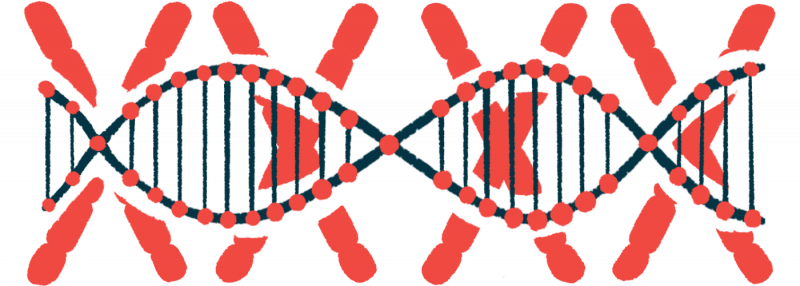#MDA2022 – SMA Babies Given Zolgensma Early Able to Stand, Walk


Most of the children with spinal muscular atrophy (SMA) who received the gene therapy Zolgensma (onasemnogene abeparvovec) in their first weeks of life are able to walk independently within developmentally normal age ranges, according to new research from the SPR1NT clinical trial.
The findings were presented at this year’s annual Muscular Dystrophy Association (MDA) conference in the poster “Onasemnogene Abeparvovec in Presymptomatic Spinal Muscular Atrophy: SPR1NT Study Update in Children with Three Copies of SMN2.”
“Results from SPR1NT again confirm the remarkable impact of Zolgensma for children at risk for SMA who are treated before the onset of symptoms,” Kevin Strauss, MD, medical director of the Clinic for Special Children in Pennsylvania, said in a press release.
SMA is caused by mutations in the gene SMN1. Zolgensma is a one-time therapy designed to deliver a functional version of this gene to cells in the body.
The SPR1NT trial (NCT03505099) is evaluating the gene therapy in children with SMA who were dosed prior to the age of six weeks, before they showed any overt symptoms of the disease. SPR1NT was funded by Novartis Gene Therapies, which markets Zolgensma.
The study included 14 children with two copies of the SMN2 gene, and 15 with three copies. The SMN2 gene can act as a “backup” when SMN1 is dysfunctional; more copies of this gene are generally tied to less severe SMA.
Data reported last summer showed that most of the children with two SMN2 copies were standing and walking independently, within developmentally normal windows.
The new data report similar outcomes in the children with three copies of the backup gene. In the absence of treatment, these children would be expected to develop type 2 SMA, meaning they would never be able to stand or walk unaided.
In stark contrast to the disease’s natural history, all 15 of the children are able to stand independently for at least three seconds, and all but one hit this motor milestone at an age that would be considered normal for children without SMA. All of the children could stand alone by the time they were 2 years old.
All but one of the children is able to walk independently, and 11 of the 15 children were walking at an age typical for children without SMA. None of the children require a feeding tube or any form of ventilation, and no serious side effects related to the gene therapy have been reported.
“In sharp contrast to the natural course of SMA, children treated preemptively with Zolgensma are standing and walking, with few or no signs of neuromuscular disease,” Strauss said. “Many of these children achieve patterns of motor development indistinguishable from their healthy peers without SMA.”
These data add to an accumulating body of knowledge showing that existing treatments for SMA are most effective when given early on, ideally before symptoms are obvious. In light of this data, there has been a recent push to screen newborns for the disease.
“These data clearly demonstrate the value of newborn screening for SMA, which is vital to affording children the earliest diagnosis and treatment to ensure the best possible outcomes,” Strauss said.
In a separate poster at the MDA conference, researchers at Novartis and other institutions conducted an analysis to evaluate the effect of Zolgensma on the function of bulbar muscles, which are the muscles around the throat and mouth that are needed for swallowing, breathing, and talking. The poster was titled “Bulbar Function in Patients with Spinal Muscular Atrophy (SMA) Type 1 Following Onasemnogene Abeparvovec.”
The analysis included data from three clinical trials, called START (NCT02122952), STR1VE-US (NCT03306277), and STR1VE-EU (NCT03461289). All three of these studies evaluated Zolgensma treatment in symptomatic babies with type 1 SMA (the most severe form of the disease, typically characterized by two copies of SMN2) who were treated prior to age 6 months.
Results showed that, of the 65 total patients evaluated, 60 (92%) had at least one recorded normal swallow test, and the same proportion did not report any issues maintaining airway protection. Of 20 patients with evaluable data, 19 were able to speak.
There were 20 patients with evaluable data for all these outcomes, and 16 (80%) of them had normal swallowing tests and could talk, with no signs of airway problems.
“The effect of SMA Type 1 on bulbar function often leads to debilitating complications, such as increased risk of aspiration, as well as social consequences from impairment of speech development,” said Shephard Mpofu, MD, chief medical officer of Novartis Gene Therapies. “These post-hoc data suggest Zolgensma can have an important impact on a child’s well-being.”
The post #MDA2022 – SMA Babies Given Zolgensma Early Able to Stand, Walk appeared first on SMA News Today.





